#蘭州
Explore tagged Tumblr posts
Text










2024.4.29 福岡 北九州 頓田貯水池 響灘緑地 熱帯生態園
世界最長のブランコ(100人乗り) オニオオハシ 青紫の睡蓮
胡蝶蘭と蝶々 コツメカワウソ
#北九州#福岡#頓田貯水池#響灘緑地#オニオオハシ#睡蓮#胡蝶蘭#蝶々#カワウソ#fukuoka#pond#park#tropical ecological garden#toucan#lotus#orchid#butterfly#otter
7 notes
·
View notes
Text

ハラールの蘭州料理。美味しい。でもお願いだから玉置浩二のメロディーのサビだけを繰り返しで店内に流さないでほしい。気が狂いそう。 #notebisu
22 notes
·
View notes
Text

12.19.23
Neo. Kishu Ryokufu 「紀州緑風」
Cute purplish root!
3 notes
·
View notes
Video
youtube
劃時代轟炸機「突襲者」首次試飛;蘭州一大學4女生半夜被掳;著名影星买囚犯器官; 医院实验室学生全得乳腺癌;中國每年6千例肺移植。| #時事金掃描...
2 notes
·
View notes
Text
初 一蘭!


いつも大行列のイメージがある一蘭ラーメンですが、まさかのお客さんゼロ!
晩御飯には早い変な時間帯で空いてました✨

YouTubeでよく観るこの雰囲気やっと体験できた〜✨テーマパークに行くようなワクワク感で、不思議な魅力があるのよな。
オーダーから体感3分もたたず着丼!
湯切りは5回、ラーメン完成から15秒以内にお客さんに運ぶ と言った細かい拘りが綴られた看板を読みながら

拘り抜かれた味を堪能🤤
チャーシューは夫さんへ、豚骨ベースのスープも飲めない私ではありますが、麺だけでとっっても美味しかった♪

一蘭に行くという夢が叶い、嬉しい達成感🥹
0 notes
Video
youtube
蘇州夜曲(Soochow Serenade) - 李香蘭(山口淑子)
0 notes
Text

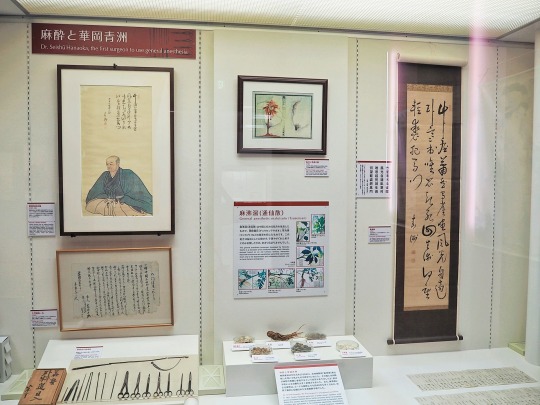


麻酔 文化元年(1804)
部分麻酔でなく、全身麻酔(麻沸湯)通仙散を用いて乳癌手術の治療を行っていたらしい✂️🎗️





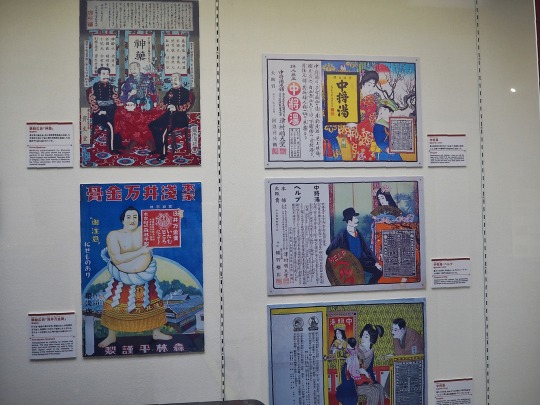
1 note
·
View note
Text
倉山區人社局剝奪失地農民生存權,林蘭英抱丈夫遺像進法庭控訴
福州市倉山區城門鎮黃山村失地農民林蘭英,因為房屋和土地被強拆和徵收,養老金被克扣,丈夫因病去世,向倉山區人社局提起訴訟,要求返還被剝奪的生存權。
10月20日,她抱著丈夫的遺像進入法庭,以「農夫與蛇」的典故,控告倉山區人社局的罪行。她表示,她將堅持維權到底,不會放棄自己的合法權益。
她也希望得到社會各界的關注和支持,讓她能夠早日拿回被克扣的養老金,為丈夫討回公道。
0 notes
Text


1 note
·
View note
Text
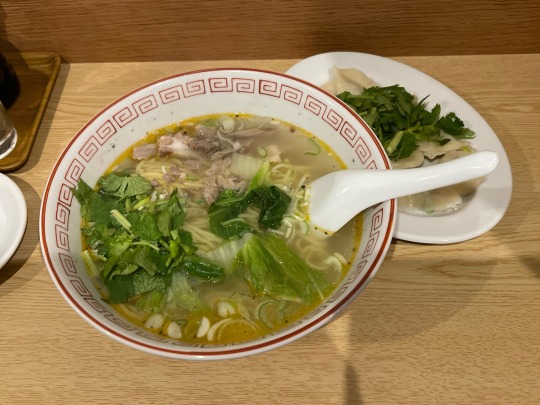
蘭州(Ranshu)「羊ラー麺」
✔️Store name / Menu
✔️Side Menu : 水餃子、香菜
✔️Nearest : 京成立石駅
#ラーメン#ramen#羊肉#mutton#mutton ramen#塩ラーメン#sio ramen#水餃子#gyoza#京成立石#keisei tateishi#ラーメンジャケ買い#noodles#food#japanese#夜食テロ#tokyo
36 notes
·
View notes
Quote
私の手元に、古ぼけた書類の束がある。手製の表紙をめくると目に入ってくるのは軍の最高機密を意味する「軍機」の朱印だ。昭和16年12月8日、日米開戦の象徴となった真珠湾攻撃に関する詳細な計画、命令書である。なぜこんなものが私の元に来たのか、そして軍の機密のその中身とは――。 「進藤三郎」という男 昭和15年9月13日、圧倒的勝利に終わった零戦のデビュー戦を指揮し、漢口基地に帰還した進藤三郎大尉 平成12(2000)年2月2日、ひとりの元海軍少佐が88年の生涯を終えた。その人の名は進藤三郎。太平洋戦争に興味のある人ならまず知らない人はいないであろう戦闘機乗りである。 進藤は昭和15(1940)年9月13日、制式採用されたばかりの零式艦上戦闘機(零戦)13機を率い、中国・重慶上空で中華民国空軍のソ連製戦闘機33機と交戦、27機を撃墜(日本側記録。中華民国側記録では被撃墜13機、被弾損傷11機)、空戦による零戦の損失ゼロという鮮烈なデビュー戦を飾った。続いて、昭和16(1941)年12月8日のハワイ・真珠湾攻撃では、空母赤城戦闘機分隊長として第二次発進部隊制空隊の零戦35機を率いた。その後、激戦地ラバウルの第五八二海軍航空隊飛行隊長、空母龍鳳飛行長などを歴任し、筑波海軍航空隊飛行長として派遣先の福知山基地で終戦を迎えた。 戦後はトラック運転手や福島県の沼沢鉱山長などの職を転々としたのち、生家のある広島に戻って東洋工業株式会社に入社、出向した山口マツダで常務取締役まで務めた。 戦争中はその華々しい「活躍」がしばしば新聞にも載るほど著名な海軍軍人だったが、戦後は一転して平凡な会社員生活で、戦争の話はよほど心を許した相手にしか、最後まですることを好まなかった。 進藤が保管していた書類に入る前に、進藤自身の「真珠湾攻撃」について、1996年から99年にかけての私のインタビューをもとに再現しよう。 突然の転勤命令 昭和16年4月、新編された当時の赤城戦闘機隊搭乗員たち。中列中央・飛行隊長板谷茂少佐、その右・分隊長進藤三郎大尉。このメンバーのうち数人は、のちに第五航空戦隊に異動した 昭和14(1939)年、ドイツ軍がポーランドに侵攻したことに端を発する欧州での大戦は、日本がドイツと軍事同盟を結んだことで、もはや対岸の火事とは言えなくなっていた。日米関係は悪化の一途をたどり、昭和16年7月28日、日本軍の南部仏印進駐を機に、アメリカは日本への石油輸出を全面的に禁止、イギリス、オランダもこれに同調する。世にいう「ABCD包囲網」である。 この制裁措置は、石油その他の工業物資の多くをアメリカからの輸入に依存してきた日本にとって、まさに死命を制するものだったった。米英蘭との戦争は、もはや不可避と考えられた。海軍も、極秘裏に開戦準備に入る。 航空母艦赤城、加賀の第一航空戦隊、蒼龍、飛龍の第二航空戦隊を主力に、第一航空艦隊(一航艦=司令長官・南雲忠一中将)が新たに編成されたのは、昭和16(1941)年4月のことである。一航艦は、空母と少数の駆逐艦だけで編成されたが、実戦に際しては、臨時に配属する速力の速い戦艦、巡洋艦、駆逐艦などを合わせ、これが世界初の試みとなる「機動部隊」として作戦に従事することになっていた。 進藤は、機動部隊の編成にともなう人事異動で、南雲中将の座乗する旗艦赤城の戦闘機分隊長に転勤を命ぜられた。進藤の直接の上官、赤城戦闘機隊の飛行隊長は板谷茂少佐である。 「支那事変での長く続いた戦地勤務で、私の体は疲れ切っていました。できれば今度は内地の練習航空隊の教官配置につけてもらえないかと思っていた矢先の転勤命令。空母乗組は“搭乗員の華”、誰もが羨む配置なんですが、正直なところ、はじめはうんざりしましたね」 と、進藤は振り返る。 猛訓練で体が悲鳴を上げていた 機動部隊の旗艦・空母赤城。巡洋戦艦を建造中に空母に改装。当時世界最大級の航空母艦だった 空母搭載の飛行機隊は、洋上訓練や出撃のとき以外は、陸上基地で訓練を行うのを常としていた。搭乗員が揃うと、赤城戦闘機隊は、鹿児島・鴨池基地を拠点に、飛行訓練を開始した。 まずは、搭乗員全員の零戦での慣熟飛行から始まり、着艦訓練の前段階として、母艦の飛行甲板を想定した、飛行場の限られた範囲に飛行機をピタリと着陸させる定着訓練が行われる。5月になると空戦、無線電話、着艦訓練と、訓練もより実戦的になり、空戦訓練は、1機対1機の単機空戦よりもチームワークを重視する編隊空戦に重点が置かれ、2機対3機、3機対6機の編隊同士の空戦訓練が、実戦さながらに行なわれた。吹流しを標的とする射撃訓練も、さかんに行われた。 9月に入ると空母翔鶴、瑞鶴からなる第五航空戦隊が新たに機動部隊に加わり、赤城の搭乗員の一部は五航戦に転勤する。進藤の回想。 「猛訓練が進むにつれ、疲労がどうしようもないほど蓄積してきました。体がだるく、食欲もない。8月には黄疸の症状も出始���、周囲から『君の目は黄色いじゃないか』と言われるほどでした。これはもう、海軍をクビになっても仕方がない、休暇療養を願い出ようと決心したんですが……」 ところが、そう決心した矢先の、進藤の記憶によれば10月1日頃、各航空戦隊の司令官、幕僚、空母の艦長、飛行長、飛行隊長クラスの幹部が、志布志湾に停泊中の赤城の参謀長室に集められ、ここで南雲中将より、「絶対他言無用」との前置きのもと、真珠湾攻撃計画が伝えられた。航空参謀・源田実中佐からは、この作戦に対応するための訓練を急ピッチで進める旨の指示もあった。 少佐の本音 揚子江上空を飛ぶ零戦一一型。進藤大尉が撮影した 「しまった。これを聞いたからには、休ませてくれとは言えないな」 と、進藤は観念したと言う。傍らにいた板谷少佐が、やや興奮の面持ちで、 「進藤君、こりゃ、しっかりやらんといかんな」 と、声をかけてきた。だが、解散が告げられ、基地に帰る内火艇に乗り込むときに、 「俺たちはただ命令通りに死力を尽くして戦うだけだが、その後始末はどうやってつけるつもりなのかな」 と、誰にともなくつぶやいた板谷少佐の言葉がいつまでも心に残った。こちらのほうが本音なんだろうな、と進藤は思った。 昭和16年10月には、戦闘機隊の訓練は仕上げの段階に入りつつあった。訓練項目に航法通信訓練が加えられ、コンパスと、波頭を目視して判断する風向、風力を頼りに長距離を飛ぶ三角航法、無線でモールス信号を受信する訓練などが行なわれた。高高度飛行の訓練も実施され、耐寒グリスを塗った20ミリ機銃による、高度8000メートルでの射撃訓練も行われた。一航戦では、18機対18機の大規模な空戦訓練も実施された。二航戦は9機対9機、五航戦は3機対3機までしかできなかったという。 11月に入ると、志布志湾に機動部隊の6隻の空母と飛行機が集められ、11月3日、南雲中将より機動部隊の各艦長にハワイ作戦実施が伝達された。その日の夜半、「特別集合訓練」が発動され、翌4日から3日間にわたって、全機全力をもって、佐伯湾を真珠湾に見立てた攻撃訓練が、作戦に定められた通りの手順で行なわれた。 〈十一月四日 「ハワイ」攻撃ヲ想定 第一次攻撃隊 〇七〇〇(注:午前7時)発進、第二次攻撃隊〇八三〇発進。十一月五日 第一次〇六〇〇、第二次〇七三〇。十一月六日〇五〇〇ヨリ訓練開始〉 と、進藤はメモに書き残している。11月6日には、戦闘機隊が半数ずつ、攻撃隊と邀撃(ようげき)隊の二手にわかれ、攻撃隊はいかに敵戦闘機の邀撃を排除して攻撃を成功させるか、邀撃隊はいかに攻撃隊を撃退するか、という訓練も行なわれた。激しい訓練で、攻撃隊の九九式艦上爆撃機のなかには不時着する機も出た。 特別集合訓練が終了すると、赤城、蒼龍は横須賀、加賀、飛龍は佐世保、翔鶴、瑞鶴は呉と、それぞれの母港に入って準備を行い、飛行機隊はふたたび、陸上基地に戻って訓練を続けた。このとき、戦闘機が洋上で単機になってしまった場合に備えて、無線帰投方位測定機(クルシー)を使っての帰投訓練が熊本放送局の電波を利用して実施されている。 覚悟を決めた日 第二次発進部隊制空隊(零戦)指揮官・進藤三郎大尉の命令書(軍機) 11月中旬には、各母艦は飛行機隊を収容し、可燃物、私物の陸揚げや兵器弾薬、食糧の最後の積み込みを終え、佐伯湾に集結した。 赤城が佐伯湾を出たのは、11月18日のことである。行動を隠匿するため、出航と同時に、各艦は厳重な無線封鎖を実施した。 空母6隻を主力とする機動部隊は北へ向かい、千島列島の択捉島(えとろふとう)単冠湾(ひとかっぷわん)に集結した。湾の西に見える単冠山は、すでに裾まで雪に覆われていた。11月24日、6隻の空母の全搭乗員が赤城に集められ、真珠湾の全景模型を前に、米軍の状況説明と作戦の打ち合わせが行われた。機動部隊の行動についてはもちろん、攻撃隊の編成や各隊ごとの無線周波数など、詳細な作戦計画が、すでにでき上がっていた。進藤が保管していた機密書類はこの日の日付から始まっている。 11月26日、機動部隊は単冠湾を抜錨、各艦、単冠山に向かって副砲、高角砲の試射を行った。凍てつく空気に、砲声が轟いた。艦隊はそのまま針路を東にとった。 「自信を持って戦いに臨める。しかし、今度こそは生きて帰れないだろうな」 と、進藤は、遠ざかってゆく雪の単冠山を見ながら、しばし物思いにふけった。 時化模様の航海が続いた。護衛の戦艦、巡洋艦、駆逐艦、補給船、潜水艦など、総勢31隻もの艦隊を、隠密裏にハワイ北方までたどり着かせなければならない赤城艦上の機動部隊司令部は緊張の連続だった。 12月1日、機動部隊は日付変更線を越えた。機動部隊は日本時間で行動するので、時差で時間感覚がずれてくる。この日の御前会議で、日本は英米との開戦を決定する。 12月2日、「新高山ノボレ 一二〇八」 という暗号電報が、聯合艦隊司令部より届いた。これは、「X日(開戦日)を12月8日とす」という意味である。開戦は、12月8日午前零時と決まった。ただし、日米の外交交渉次第では、まだ作戦が中止になることもあり得る。しかし反転命令は出ず、矢はついに弦を放れた。 12月8日午前1���半(日本時間)。第一次発進部隊が次々と6隻の空母を発艦した。 第一次発進部隊は、零戦43機、九九艦爆51機、九七艦攻89機(うち雷撃隊40機、水平爆撃隊49機)、計183機で、総指揮官は淵田美津雄中佐である。第一次攻撃では、雷撃隊が二列に並んで停泊している米戦艦の外側の艦を攻撃、水平爆撃隊が上空より内側の艦を爆撃する。さらに艦爆隊は飛行場施設を爆撃することになっていた。 そこらじゅうで火柱が 九九式艦上爆撃機。急降下爆撃を行う 機動部隊の各母艦では、第一次の発艦後、すぐに第二次発進部隊の準備が始められた。 第二次は零戦36機、九九艦爆78機、九七艦攻(水平爆撃のみ)54機、計168機が発艦し、うち零戦1機と艦爆2機が故障で引き返している。こんどは、艦爆が第一次で撃ちもらした敵艦と飛行場を狙い、艦攻が敵飛行場を水平爆撃することになっていた。 赤城から発艦するのは、零戦9機と九九艦爆18機。2時13分、進藤の搭乗する零戦、A1(本来はローマ数字だが、機種依存文字のためアラビア数字で表記)‐102号機は、その先頭を切って発艦した。第二次発進部隊の総指揮官は瑞鶴艦攻隊の嶋崎重和少佐、進藤は、制空隊(零戦隊)全体の指揮官を務める。 「第一次の発進を見送ったときにはさすがに興奮しましたが、いざ自分が発進する段になると平常心に戻りました。真珠湾に向け進撃中、クルシーのスイッチを入れたら、ホノルル放送が聞こえてきた。陽気な音楽が流れていたのが突然止まって早口の英語でワイワイ言い出したから、これは第一次の連中やってるな、と奇襲成功を確信しました」 第一次に遅れること約1時間、真珠湾上空に差しかかると、湾内はすでに爆煙に覆われ、ものすごい火柱が上がっていた。心配した敵戦闘機の姿も見えない。空戦がなければ地上銃撃が零戦隊の主任務になる。進藤はバンクを振って(機体を左右に傾ける合図で)各隊ごとに散開し、それぞれの目標に向かうことを命じた。 「艦攻の水平爆撃が終わるのを待って、私は赤城の零戦9機を率いてヒッカム飛行場に銃撃に入りました。しかし、敵の対空砲火はものすごかったですね。飛行場は黒煙に覆われていましたが、風上に数機のB-17が確認でき、それを銃撃しました。高度を下げると、きな臭いにおいが鼻をつき、あまりの煙に戦果の確認も困難なほどでした。それで、銃撃を二撃で切り上げて、いったん上昇したんですが」 頭によぎった最悪のシナリオ 開戦を告げる昭和16年12月9日の新聞紙面 銃撃を続行しようにも、煙で目標が視認できず、味方同士の空中衝突の危険も懸念された。進藤は、あらかじめ最終的な戦果確認を命じられていたので、高度を1000メートル以下にまで下げ、単機でふたたび真珠湾上空に戻った。 「立ちのぼる黒煙の間から、上甲板まで��中に没したり、横転して赤腹を見せている敵艦が見えますが、海が浅いので、沈没したかどうかまでは判断できないもののほうが多い。それでも、噴き上がる炎や爆煙、次々に起こる誘爆のすさまじさを見れば、完膚なきまでにやっつけたことはまち��いなさそうだと思いました。胸がすくような喜びがふつふつと湧いてくる。 しかしそれと同時に、ここで枕を蹴飛ばしたのはいいが、目を覚ましたアメリカが、このまま黙って降参するわけがない、という思いも胸中をよぎります。私は昭和8年、少尉候補生のときの遠洋航海でアメリカに行き、そのケタ違いの国力と豊かさをまのあたりにしていますから、タダで済むはずがないことは容易に想像できる。これだけ派手に攻撃を仕掛けたら、もはや引き返すことはできまい。戦争は行くところまで行くだろう、そうなれば日本は…………負けることになるかもしれないと、このときふと考えました」 空襲を終えた攻撃隊、制空隊は、次々と母艦に帰投し、各指揮官が発着艦指揮所の前に搭乗員を集め、戦果を集計した。進藤は、赤城の艦爆隊と合流して帰還した。南雲中将が、わざわざ艦橋から飛行甲板上に下りてきて、「ご苦労だった」と進藤の手を握った。 ほどなく、最後まで真珠湾上空にとどまっていた総指揮官・淵田中佐の九七艦攻が帰艦する。大戦果の報に、艦内は沸き立った。しかし日本側にとって残念なことに、いるはずの敵空母は真珠湾に在泊していなかった。 艦上では、第三次発進部隊の準備が進められている。蒼龍の二航戦司令官・山口多聞少将からは、蒼龍、飛龍の発艦準備が完了したとの信号が送られてきた。しかし、南雲中将は、第三次発進部隊の発艦をとりやめ、日本への帰投針路をとることを命じた。 激しい戦闘の代償 日本機の空襲を受けるハワイ・真珠湾の米艦隊 「当然もう一度出撃するつもりで、戦闘配食のぼた餅を食いながら準備をしていましたが、中止になったと聞いて、正直ホッとしました。詰めが甘いな、とは思いましたが…………」 体調不良を押してここまできたが、ようやく任務が果たせた。緊張の糸が切れた進藤は、そのまま士官室の祝宴にも出ず、私室で寝込んでしまった。 真珠湾攻撃で日本側は、米戦艦4隻と標的艦1隻を撃沈したのをはじめ、戦艦4隻、その他13隻に大きな損害を与え、飛行機231機を撃墜、あるいは撃破するなどの戦果を挙げた。資料によって異なるが、米側の死者・行方不明者は2402名、負傷者1382名を数えた。いっぽう、日本側の損失は、飛行機29機(第一次9機、第二次20機。うち零戦9機、九九艦爆15機、九七艦攻5機)と特殊潜航艇5隻で、戦死者は64名(うち飛行機搭乗員55名。別に、12月9日��上空哨戒の零戦1機が着艦に失敗、搭乗員1名死亡)。米軍の激しい対空砲火を浴びて、要修理の飛行機は100機あまりにのぼった。 ――ちなみに、真珠湾攻撃当時、連合艦隊司令長官・山本五十六大将57歳、機動部隊指揮官・南雲忠一中将54歳、航空参謀・源田実中佐37歳、攻撃隊総指揮官・淵田美津雄中佐39歳、第二次発進部隊指揮官・島崎重和少佐33歳、雷撃隊指揮官・村田重治少佐32歳、第一次制空隊指揮官・板谷茂少佐32歳、第二次制空隊指揮官・進藤三郎大尉30歳、加賀戦闘機分隊長・志賀淑雄大尉27歳、そして昭和天皇40歳だった。 真珠湾攻撃の帰途、二航戦の蒼龍、飛龍は、ウェーク島攻略作戦に参加するため、本隊を離れた。残る赤城、加賀、翔鶴、瑞鶴は、12月23日から24日にかけ瀬戸内海・柱島の泊地に投錨する。各艦の飛行機隊は、零戦隊は佐伯基地経由で岩国基地へ、艦爆、艦攻は鹿屋基地経由で宇佐基地へと向かい、ここでしばしの休養が与えられた。 進藤は、12月25日、岩国基地から呉海軍病院に直行し、軍医の診察を受けた。診断の結果は、「航空神経症兼『カタール性』黄疸」、二週間の加療が必要とのことで、そのまま入院することになった。十二月三十日付で赤城分隊長の職を解かれ、さしあたって任務のない「呉鎮守府附」の辞令が出る。この日から広島の生家での転地療養が認められ、進藤は、ひさびさに正月を両親と迎えることができた。 再び始まる苦しい戦い 昭和17年11月、進藤大尉がラバウルに向け出発直前、東京駅にて 「海鷲・進藤大尉」の帰郷は誰からともなく近所に伝わり、毎日のように真珠湾の話をねだりに客がやってくる。子供たちは、道で進藤の姿を認めると、憧憬のまなざしで、直立不動になって挙手の敬礼をした。 真珠湾攻撃から帰った進藤は、療養生活を送ること2ヵ月半、ようやく黄疸の症状もおさまり、昭和17(1942)年2月12日、〈大分海軍航空隊司令ノ命ヲ受ケ服務スベシ〉の辞令を受けて大分空に着任。四月一日、戦闘機搭乗員の訓練部隊として徳島海軍航空隊が新たに創設されると、その飛行隊長兼教官に補せられた。 最前線・ニューブリテン島ラバウルで作戦中の第五八二海軍航空隊飛行隊長兼分隊長への転勤辞令が出たのは、昭和17年11月8日のことである。処分しそびれていた真珠湾攻撃の軍機書類の保管を元海軍機関大佐の父に託してラバウルに向かう。五八二空に着任したとき、進藤は新たに部下となる隊員たちに、 「海軍戦闘機隊のモットーは編隊協同空戦だ。搭乗員が戦果を挙げる陰には、整備員や兵器員といった裏方の努力が不可欠である。けっして一人の手柄を立てようなどとは思わず、より長く、より強く、一致団結して戦い抜くように」 と訓示をした。そして、進藤の長く苦しい戦いがここから始まる。
1941年12月8日の「真珠湾攻撃」に「零戦35機」を率いて参加した当事者の「貴重な証言」(現代ビジネス) - Yahoo!ニュース
5 notes
·
View notes
Text

4.27.23
Neo. Kishu Ryokufu 「紀州緑風」
This Neofinetia falcata has light green flowers. Its name 紀州緑風 means Kii province early-summer breeze (literally kiishuu green wind). What a pretty name 🤗
2 notes
·
View notes
Text
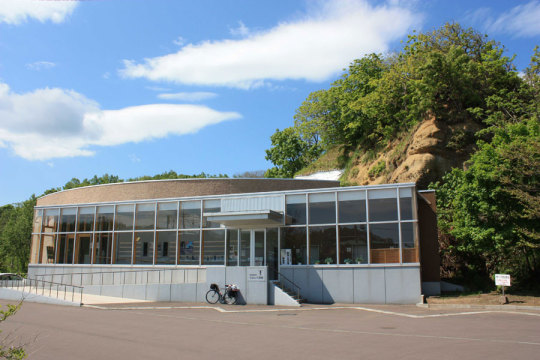

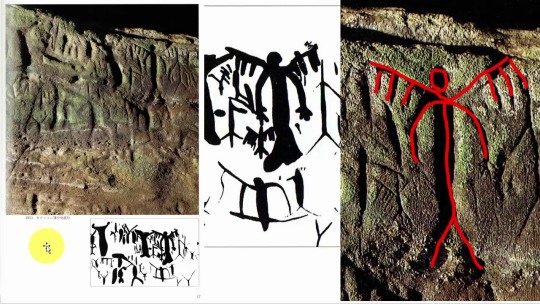
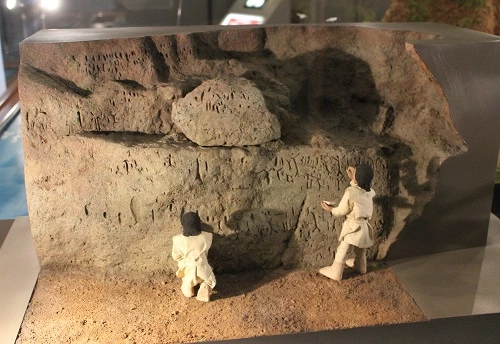
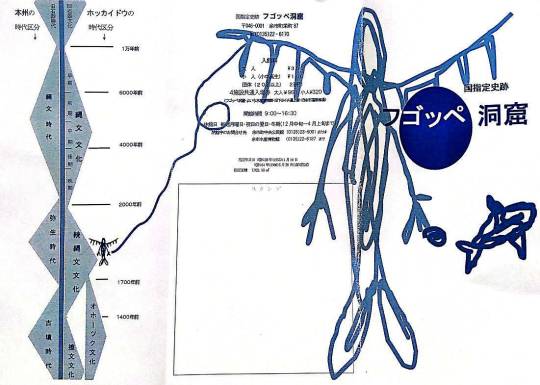
日本の考古学者の皆さん、日本の考古学の新しい記事へようこそ。そうは言っても、気を楽にして始めましょう。 - 1950年代、北海道余市市のフゴッペ洞窟で、縄文時代後期1000年から500年頃の一連の彫刻が発見された。 海水浴のため蘭島を訪れていた札幌市の高校生らが発見した。 これに先立ち、1927年に国鉄函館本線の土塁工事中に9個の彫刻が発見された。 - 洞窟からは動物や魚の骨が多数出土しました。 貝類では二枚貝やカタツムリ、魚類ではヒラメやヒラメなどの沿岸魚からクジラまで、哺乳類ではシカのほか、キツネやタヌキ、オオカミの骨も見つかりました。 - このことからも、当時は食糧が豊富にあり、人々は狩猟や漁業に専念していたことがわかります。 本州で稲作を中心とした弥生文化が発展していた頃、北海道では稲作をする必要はありませんでした。 人を乗せ���船の彫刻は北アジアで見られるものと似ていると言われています。 - 気に入っていただければ幸いです。今後の投稿でお会いしましょう。良い一週間をお過ごしください。 - Welcome, Japanesearchaeologicalists, to a new installment of Japanese archaeology. Having said that, make yourself comfortable and let's begin. - In the 1950s, a series of engravings dating from the late Jomon period 1000-500 were discovered in Hokkaido Prefecture in the Fugoppe Cave located in the city of Yoichi. They were discovered by high school students from Sapporo who were visiting Orchid Island to bathe in the sea. Before that, nine carvings were discovered in 1927 during earthworks on the Hakodate main line of the Japanese National Railways. - Many animal and fish bones were excavated in the cave. Shellfish include bivalves and snails, fish range from coastal fish such as flounder and flounder to whales, and mammals include deer, and bones of foxes, raccoon dogs and wolves were also found. - This shows that at that time food was abundant and that people dedicated themselves to hunting and fishing. When the Yayoi culture based on rice cultivation was developing in Honshu, there was no need to grow rice in Hokkaido. The carvings of boats carrying people are said to be similar to those found in northern Asia. - I hope you liked it and we'll see you in future posts and have a good week. - Sean bienvenidos, japonistasarqueológicos, a una nueva entrega de arqueología nipona, una vez dicho esto pónganse cómodos qué empezamos. - En la década de los años 50 se descubrió en la prefectura de Hokkaido en la cueva Fugoppe localizada en la ciudad de Yoichi, se hallaron una serie de grabados que datan del periodo Jomon final 1000-500. Fueron descubiertos por estudiantes de secundaria de Sapporo que visitaban la Isla Orquídea para bañarse en el mar. Antes de eso, se descubrieron nueve tallas en 1927 durante los trabajos de remoción de tierra en la línea principal de Hakodate de los Ferrocarriles Nacionales de Japón. - En la cueva se excavaron muchos huesos de animales y peces. Los mariscos incluyen bivalvos y caracoles, los peces van desde peces costeros como la platija y la platija hasta las ballenas, y los mamíferos incluyen ciervos, y también se encontraron huesos de zorros, perros mapaches y lobos. - Esto demuestra que en aquella época abundaba la comida y que la gente se dedicaba a la caza y la pesca. Cuando la cultura Yayoi basada en el cultivo del arroz se estaba desarrollando en Honshu, no había necesidad de cultivar arroz en Hokkaido. Se dice que las tallas de barcos que transportan personas son similares a las encontradas en el norte de Asia. - Espero que os haya gustado y nos veamos en próximas publicaciones que pasen una buena semana.
#日本#history#歴史#archeology#考古学#japan#geography#prehistory#先史時代#映画#北海道#hokkaido#余市市#yoichicity#unesco#ユネスコ
39 notes
·
View notes
Text



蘭州牛肉湯麵 Lan Zhou beef soup noodles
4 notes
·
View notes
Text
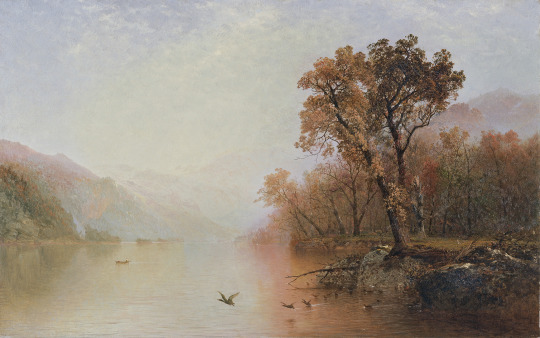
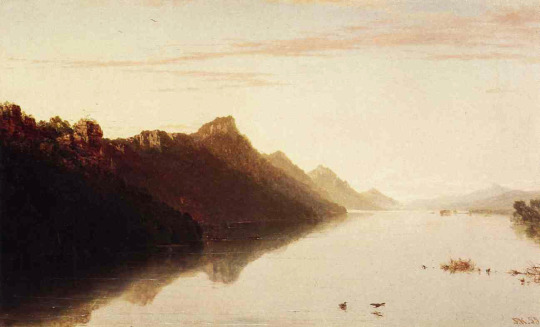

John Frederick Kensett (1816-1872, American) Among the Hudson River School artists, John Frederick Kensett is the acknowledged master of the mode termed “luminism” in American landscape painting.
美國風景畫家和雕刻家,在哈德遜河畫派的藝術家中,他是公認的美國風景畫“發光主義”模式的大師。 其風景畫主要取材自新英格蘭和紐約州。 其早期作品受哈德遜河派創始人托馬斯·科爾影響較大,但風格較為保守,並不像科爾那樣使用熱烈的色彩,也不常以地貌之奇取勝。 其成熟時期的作品色彩淡雅,主要描繪平靜的海岬及水面。
17 notes
·
View notes
